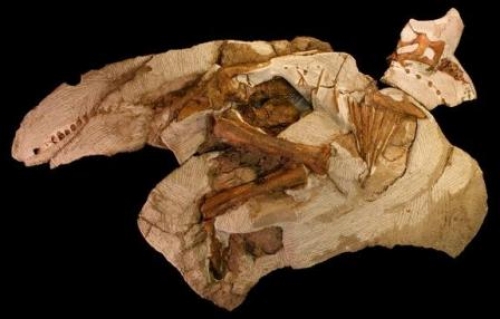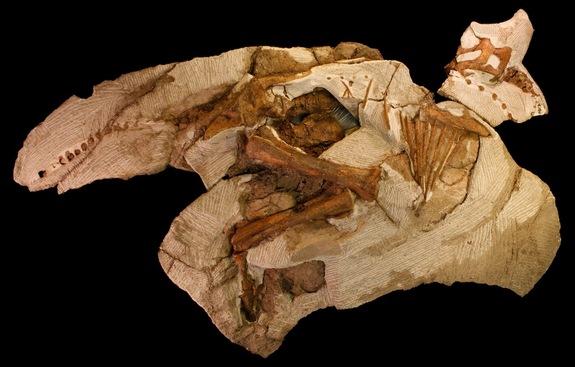

A dinosaur skeleton discovered by an eagle-eyed high-school student turns out to be the smallest, youngest and most complete duck-billed dinosaur of its kind ever found.
This Cretaceous-era herbivore, Parasaurolophus, walked the Earth some 75 million years ago. The dinosaurs in this genus are best known for their impressive tube-shaped head crests, which may have been used for display or perhaps to amplify the animals’ calls. The little specimen, dubbed “Joe,” was so young that its crest was a mere bump on its head.
Farke and a group of students were prospecting for fossils in Utah’s Grand Staircase-Escalante National Monument, surveying ground Farke had already covered. Terris spotted a little sliver of bone sticking out from under a boulder and alerted Farke, who thought it looked like a piece of dinosaur rib — nice, but not really worth the trouble of excavating.
“We were going to try to see if we could get something better,” Farke told LiveScience.
He walked around the other side of the boulder and picked up what looked like a large cobblestone, turning it over in his hands. A dinosaur skull stared back at him.
In light of the skull, Farke thought it wise to go re-check Terris’ discovery. A closer look revealed it to be a string of toe bones.
“We have the skull on one side of this boulder and the toes on the other side. That means the whole dinosaur skeleton has to be in between,” Farke said. “So we got pretty excited.”
The team had to line up permits to excavate on the public land; they returned in 2010 to dig the bones from the ground.
After 1,300 painstaking hours of cleaning, chiseling and picking, technicians revealed the fossil buried in all that stone. The completeness of the skeleton turned out to be “pretty spectacular,” Farke said.
The paleontologists realized they had an amazing example of a baby Parasaurolophus on their hands. Even better, they were able to sample the baby’s leg bone. As dinosaur bones grow, they develop ring patterns, much like trees.
“It didn’t have any rings at all,” Farke said of “Joe.” “So what that shows is that this animal was under a year old when it died.”

